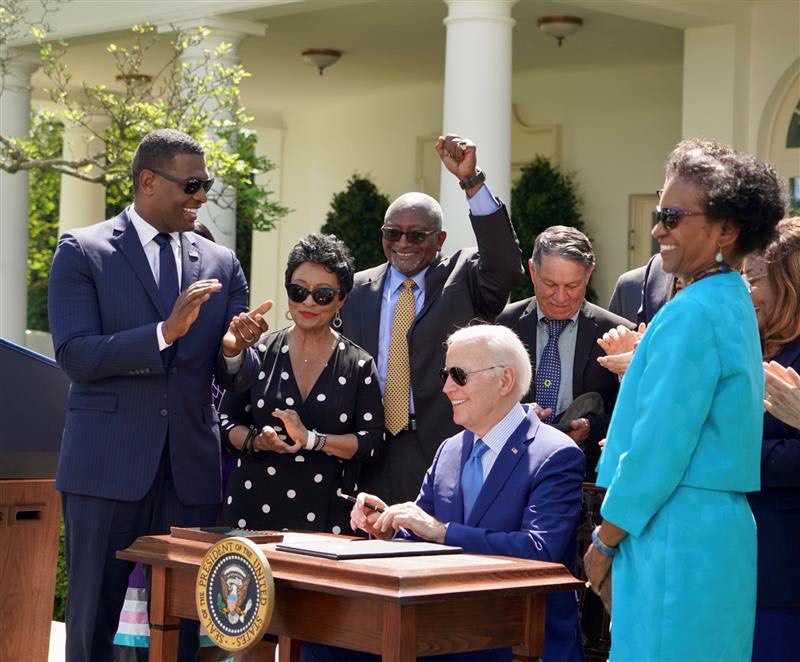Most definitions of environmental justice include the following language: “fair treatment and meaningful involvement of all people regardless of race, color, national origin, culture, education, or income with respect to the development, implementation, and enforcement of environmental laws, regulations, and policies.” But let’s step back for a moment and examine the environmental racism that this movement seeks to address.
Environmental Racism
Countless studies have shown that people of color and low-income face greater exposure to pollutions, toxics, and other environmental hazards, which leads them to suffer disproportionately higher incidences of adverse health impacts. In fact, studies show that people of color, and Black Americans in particular, are subjected to disproportionate amounts of pollution from nearly every source imaginable, including industry, transportation, construction, agriculture, and even residential sources.
We refer to this as environmental racism, and it is one of the deadliest aspects of systemic racism, which has – by enabling racist policies like redlining – turned communities of color into dumping grounds for sources of pollution – becoming, in effect, sacrifice zones. And while income is a factor, race is the most significant factor in determining how much pollution you are burdened with.
Environmental Justice
The environmental justice movement emerged as a response to environmental racism. Environmental justice is a civil rights analysis of environmental decision-making through the permitting process. Permits allow government agencies and industries pollute our air, water, and land. In effect, they are licenses to sacrifice people and their health, since the amount of pollution that is emitted in close proximity to where a person lives, works, learns, and plays has proven to be a significant factor in the social determinants of health.
Environmental justice seeks to address the disproportionate exposure to pollution and other environmental hazards that people of color face across this country, along with the resulting adverse health impacts this causes. The climate justice movement is a subset of the environmental justice movement that focuses on the disproportionate impacts the climate crisis has on communities of color and low-income. In both of these movements, we seek solutions that are equitable, meaning that they account for and attempt to offset the disparities our communities have endured for generations.
A Little History
The Principles of Environmental Justice were drafted at the First National People of Color Environmental Leadership Summit held in October 1991 in Washington, DC. The Jemez Principles of Democratic Organizing were drafted at meeting in Jemez, NM in December 1996 hosted by the Southwest Network for Environmental and Economic Justice. Both remain in use today. The climate justice movement emerged in response to the disproportionate impacts of climate change on communities of color and low-income, with the Principles for Just Climate Change Policies in the U.S. offering additional guidance.
To help you better understand the history of our movement, we created the Black History & the Environmental Justice Movement storymap. And as one of the most recognized voices in the movement, WE ACT has been successful in passing a number of laws at the city and state level. And in 2012, we established a Federal Policy Office in Washington, DC to serve the interests of our Northern Manhattan communities at the federal level.

Federal Response
On February 11, 1994, President Clinton signed Executive Order 12898 – Federal Actions to Address Environmental Justice in Minority Populations and Low-Income Populations. It was intended to focus federal attention on the inequitable impacts of federal actions on the environmental health people of color and low-income. It was a milestone moment for the environmental justice movement, as it was the first time our government has acknowledged the disparity of pollution and other environmental hazards that these communities have been subjected to for generations. And while the intention was good, it fell short of accomplishing anything beyond public recognition for our struggle.
The watershed moment came nearly 27 years later when President Biden signed Executive Order 14008, tackling the climate crisis with a whole-of-government approach that centered justice. This included the Justice40 Initiative, which set a goal of 40 percent of the benefits of Federal investments – including investments to advance climate change, clean energy and energy efficiency, clean transit, affordable and sustainable housing, training and workforce development, remediation and reduction of legacy pollution, and the development of critical clean water and wastewater infrastructure – go to “disadvantaged communities that are marginalized, underserved, and overburdened by pollution.” It also established the White House Environmental Justice Advisory Council, which our Co-Founder and Executive Director Peggy Shepard served as the co-chair of.
Having established this framework for government-wide action on environmental justice, President Biden went on to issue Executive Order 14096 on April 26, 2023, directing the Federal Government to “build upon and strengthen its commitment to deliver environmental justice to all communities across America through an approach that is informed by scientific research, high-quality data, and meaningful Federal engagement with communities with environmental justice concerns.”
Unfortunately, all of this was undone when President Trump regained the White House on January 20, 2025. In an unprecedented issuing of Executive Orders, he rescinded the previous Executive orders recognizing and supporting environmental justice while waging a government-wide campaign against equity – and environmental justice in particular.
Despite these actions, the overwhelming majority of Americans still support environmental justice. According to a 2024 Environmental Protection Network post-election poll, 80 percent of all voters, including 72 percent of Trump voters, were in favor of “increasing federal funding to communities disproportionately harmed by air and water pollution.”
The fight continues, and WE ACT will remain at the forefront until environmental and climate justice are achieved.